Combat autogyro N.I. Kamov
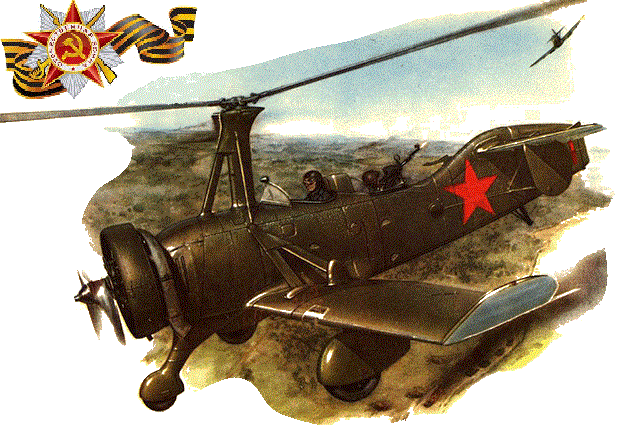
Autogyro "Kaskr" was the first domestic rotorcraft, lifted into the air. It began the Soviet autogyrobuilding, which became a technical school for the subsequent development of helicopters.
The next aircraft N.I. Kamov became an autogyro, which received the code A-7. Its development was started in 1931 in the special structures section of TsAGI. In this unique car, both the ideas of using the gyroplane and the new constructive solutions were embodied. A-7 was developed primarily for use for military purposes, according to the technical requirements of the Red Army Air Force as a spotter of artillery fire, a communications machine and a close reconnaissance aircraft. It also provided for its use from ships of the Navy.
A-7 - winged autogyro with mechanical unwinding of the rotor before takeoff. The fuselage was a truss structure and had two separate cabins for the pilot and the observer. In order to improve the visibility and the firing angles of the rear lower hemisphere, the tail part of the fuselage was severely narrowed, almost turned into a tail boom, typical of modern rotorcraft designs. The low wing was folded upwards along the connector with the center-section, which, in combination with the folding blades, made it convenient to transport and place in hangars and on ships. To improve controllability at low flight speeds, slotted ailerons and a reverse slit were used on the horizontal tail. The tricycle landing gear with nose wheel and additional tail support ensured the stability of the takeoff and the horizontal position of the rotor at the time of its spin-up and braking, which reduced the oscillations of the blades relative to the vertical hinges. The chassis with a nose strut helped reduce runoff due to lower propeller resistance. All supports had hydraulic suspension struts. It was provided for the installation of the aircraft on skis. The three-lobe rotor of the autogyro had a sleeve with horizontal and vertical hinges.
The successful layout of the autogyro in terms of providing an acceptable frequency response and the installation of a chassis with a nose wheel made it possible in the design of the sleeve to dispense with vertical hinge dampers, using only a slight springing of the blades in the horizontal plane. In general, the sleeve was simple, and there were no comments on its work in the test reports. The blades of the autogyro were distinguished by careful manufacturing and balancing. Mechanical unwinding of the rotor was carried out using a transmission consisting of two shafts - horizontal and inclined - and an intermediate gearbox.
When developing a gyroplane, special attention was paid to the aerodynamic shape of a glider. The use of fairings on the boar mountings and the boar itself, the engine hood, and the chassis fairings anticipated the achievement of perfect aerodynamic shapes on modern helicopters. All this contributed to the reduction of the total resistance of the autogyro, having a mass of 2230 kg on A-7, the air-cooled M-22 motor with a power 480 hp was mounted. with pulling screw fixed pitch.
The military autogyro had the necessary armament, which consisted of the PV-1 synchronous machine gun and the Degtyarev system machine gun with 12 magazines on the rear turret mount. The installation also included the pairing of machine guns on this turret. The four suspension points of the bomb armament on the A-7 were equipped with mechanical and electrical drop systems. Subsequently, on the autogyro was used and reactive weapon. On the A-7, the receiving-transmitting station 13SK-3 was installed, later replaced by the RSI-3. For aerial photography mounted camera POTTE 1B.
They built three modifications of the autogyro: А-7 - experimental car; A-7bis experimental machine after modifications, which differs from its predecessor by increased boar, improved aerodynamics and modified plumage; The A-7-3 is a production machine that differs from the A-7bis in reduced mass. Its maximum speed was 219 km / h, and the takeoff run length - 28 m.
Flight tests of the A-7 rotary-wing began in the summer of 1934, and in the spring of 1937, they were continued on the A-7bis. The tests and subsequent development of the gyroplane became the fundamental basis for the subsequent development of rotary-wing machines.
In the winter of 1939, the war began with Finland. Two autogyros A-7 and A-7bis were sent to the front to provide for the adjustment of Soviet artillery firing. These test pilots were piloted by A. Ivanovsky and D. Kositz.
During the preparation of the material part and during test flights on autogyros there were malfunctions. In one helicopter, during a forced landing, the front ski was damaged, on the other - in the onboard radio station a condenser struck. Engineer I. Karpun and mechanic A. Kagansky eliminated faults and prepared the machines for the combat mission. Until the end of the war, when they broke through the Mannerheim line and took Vyborg by storm, autogyros made several reconnaissance missions.
At the beginning of 1939, the plant number 156 laid a series of five A-7bis. Four cars quickly flew around and presented to the customer. But due to the lack of a ground radio station, it was impossible to assess the quality of radio communications. Then the customer checked the radio communication simultaneously on all autogyros, one of which flew over the airfield, the other went beyond its limits, and two stood on the ground. The connection between all the cars was excellent and they passed acceptance.
The fifth gyroplane was significantly delayed in the revision, as several times when the engine was turned on, the mechanism for the unwinding of the rotor failed. Cause found with difficulty. She turned the offset on 0,2 mm guide rod of one of the 18 squeezing springs. Autogyro took off and was accepted by the customer.
From the first day of the war, a plant of five A-7bis began to be urgently prepared at the plant. Soon they rose from the Ukhtomsky airfield and flew off to the front in formation. Then they were sent to the First Air Force Adjustment Squadron. These machines participated in the Great Patriotic War, performing the assigned tasks on the Western Front near Smolensk.
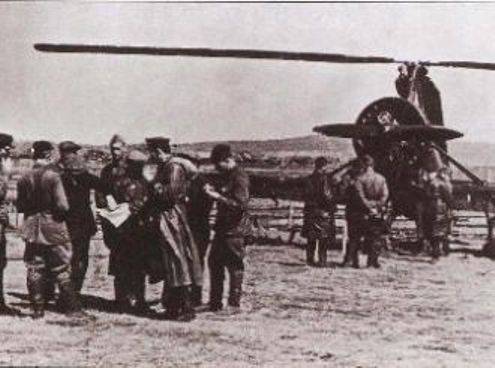
In the first combat sortie on the front, the autogyros were not fired upon by the Germans, since they still didn’t know what kind of car it was (the German captured told about it). The next time one of the autogyros fell under fire, but the enemy hit with a big lead, incorrectly estimating the speed, and when he adjusted the fire, the gyroplane had already disappeared into the clouds.
In the nightly departures, silent flyers were planned over the Hitlerite positions, scattering leaflets. The complexity of the use of rotary-wing apparatus at the front was in their disguise. Masking the rotor was very problematic. The positive quality of А-7bis was high survivability. One of the autogyros fell under the line of a large-caliber machine gun. The car was pierced in many places. The fuselage, plumage, rotor blades suffered. The observer was wounded in the legs, and the pilot was wounded in the arm, but the gyroplane retained control and safely flew into the location of the unit.
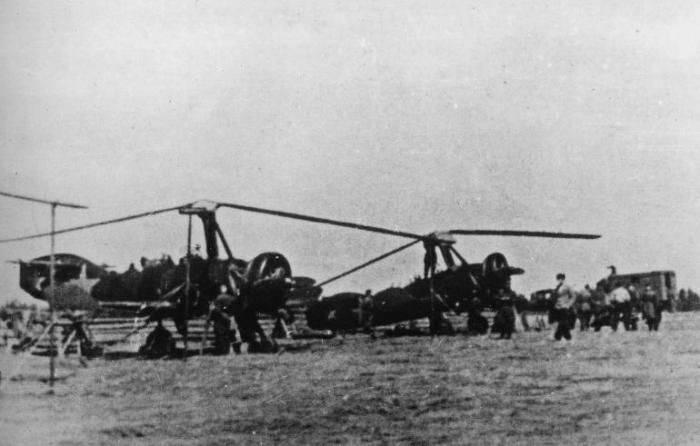
During the war years, the A-7 autotroop corrected artillery fire, and a number of night sorties were carried out over the front line to the places of partisan detachments.
With a temporary advantage in technology, the enemy moved inland. At one of the sites, our military units were surrounded, and the plan-order to leave the encirclement was delivered to them by autogyro. The management of the autogyro plant received an order to urgently evacuate from Ukhtomskaya near Moscow to the Urals, to the village of Bilimbay. There, an assembly shop and other workshops were located in the church building, and the machine shop was equipped in a church extension. They quickly began to repair A-7bis, who returned after the battle near the town of Yelnya.
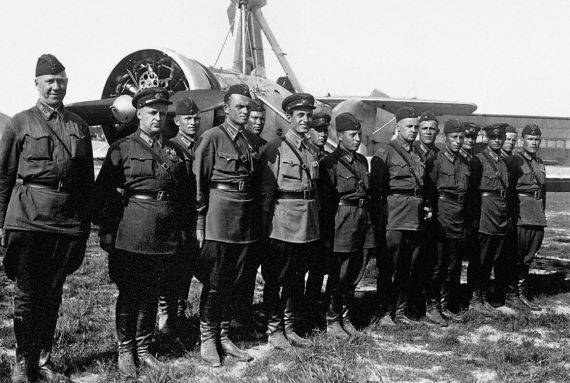
The vehicles were soon repaired, and the military pilots began flight training, building a landing site on the ice of the pond. But one morning the pilots found that the surface of the site was covered with ice holes. It turned out that the staff of the OKB VF Bolkhovitinov was fishing at night and spoiled the site.
The flights continued from the clearing, which was cleared on the hill. Interestingly, the factory pilot wanted to land on a new platform in his Po-2, but, having studied it and the approaches to it, he changed his mind, since the platform even for such an aircraft was too small. He was surprised that the autogyros were sitting on her.
At the end of training flights, a squad of three cars went to Moscow. The helicopters loaded onto two platforms, and the crews settled in two heat trucks. Over two weeks the car reached the station of destination in the city of Lyubertsy. When the train reached, the flight crew did not recognize its territory, as it was littered. A part of it was dug up under gardens, another was occupied by car repair shops. However, the training flights were continued.
Later, two autogyroes were sent to Orenburg, to the school to train pilot spotters. However, it was not possible to adjust the operation of autogyros in the school due to the lack of instructor pilots who mastered these machines.
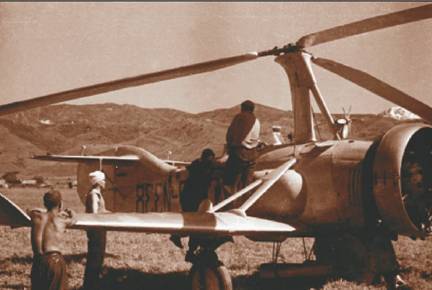
In the pre-war years, the use of autogyros in the national economy was also resolved. In the winter of 1938, the A-7 helicopter on the Yermak icebreaker participated in the rescue of group I.D. Papanin from a drifting Arctic ice floe. In the spring of 1941, an expedition was sent to the foothills of the Tien Shan, where there was a pilot-engineer, VA. Karpov on the autogyro successfully pollinated arrays of fruit trees.
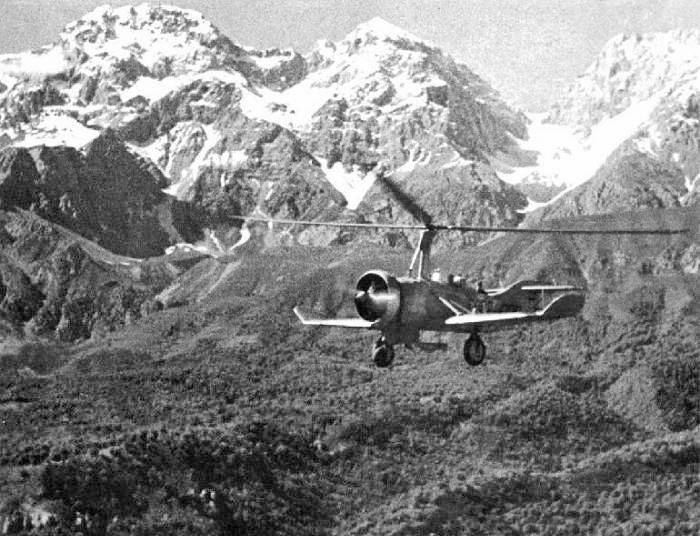
In the development of rotary-wing aircraft avtochiri A-7 played an important role. In particular, for the first time, and it was in the Soviet Union, they proved the possibility and expediency of using autogyros for military purposes for reconnaissance, communications, artillery fire adjustments, etc. Also fully justified their use in agriculture. The accumulated experience of practical operation of the A-7 included flight crew training, maintenance, operation in the combat unit and repair and rehabilitation work.
Autogyro A-7 remained the largest and fastest of all serial autogyros in the world. In 1940, the Kamovians began designing the AK autogyro. It was developed in accordance with the tactical and technical requirements of the Red Army Air Force as a mobile artillery observation point to establish the coordinates of targets that are invisible from the ground and adjust artillery fire using various methods. Provided transportation of an autogyro on a truck trailer after the combat columns. The transfer from transport to combat should not exceed 15 min.
The aircraft was worked out in two versions: an autogyro-helicopter and an autogyro with a jump take-off. The first option was a single-rotor helicopter with compensation of the rotor moment of the rotor with the help of steering surfaces, using the energy of the air jet thrown by the pusher propeller and partially carrying. Structurally, this was supposed to be done in the form of a vertical tail, which has three rudders with flaps and slats. To make a vertical take-off, hovering, and acceleration, this device was supposed to take a helicopter flight, and go in horizontal flight to the gyro mode - by reducing the overall pitch of the rotor and disconnecting it from the motor drive.
TsAGI conducted research on various tailing schemes that included flaps and slats. The efficiency was estimated at different angles of slip and in the presence of a jet from the rotor. At the end of the study, in June 1940, lateral force on vertical tail was obtained in the hover mode, equal to 0,7 of the rotor thrust value. Such a lateral force on the plumage allowed the control torque to be created relative to the center of gravity of the apparatus, exceeding the reactive torque of the rotor by 30%. In the version of the helicopter-helicopter, the distribution of engine power between the main and the pushing screws was provided by the static ceiling 2000 m.
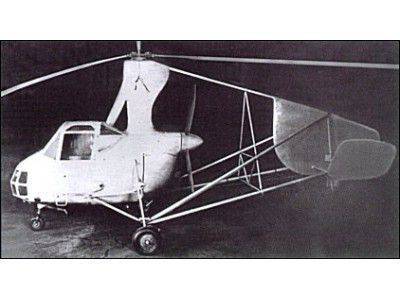
However, the short terms of the government assignment and the lack of confidence that this 30-percent stock of control moment would be sufficient for road control, forced to abandon this very interesting version of the rotorcraft and choose a simpler second version of the gyroplane, taking off without a takeoff run. Jumping takeoff of such an autogyro was performed by using the kinetic energy of the rotor by increasing the total pitch of the propeller, promoted to high revolutions.
The AK device was a wingless two-seater gyroplane with an AB-6 engine, having a take-off power of 240 hp. The crew cabin with the pilot and observer seats located nearby was located in the forward fuselage, and the engine with the pusher propeller was behind it. Such an arrangement ensured a compact design, good visibility, crew convenience and better alignment. The chassis is a tricycle, with a nose wheel, well proven on the A-7 autogyros. Depreciation racks of support and brakes - hydraulic. The well-developed tail unit was attached to the light struts of the pipes to the landing gear and boar.
A three-blade pushing screw of variable pitch with metal blades was installed on the autogyro. The presence of the speed regulator allowed the rotation of the rotor at high engine speeds and low propeller thrust. Small thrust allowed to securely hold the car on the brakes. The engine had forced cooling from the fan.
The mechanical protrusion system of the main rotor included a single-stage gearbox on the motor of two spur gears with an elastic output coupling, a short horizontal roller, a central gearbox with two bevel gears and a hydraulic friction clutch, a vertical roller with two Hooke hinges and an upper gearbox with two spur gears . The total gear ratio was 6,33: 1. In the large gear of the upper gearbox was located the vibration damper of the transmission.
In the explanatory note to the conceptual design of the new gyroplane was given in comparison with the most outstanding German two-seater short-takeoff Fizeleler Fi-156 “Storch” aircraft at that time. This aircraft was used for similar purposes and also, like the AK, had an 240 hp engine. The table shows some comparative data. As can be seen from these data, the AK autogyro surpassed the best world aircraft, similar in purpose, number of crew and take-off mass. In the design of the autogyro AK took part N.G. Rusanovich, M.L. Mil E.I. Error, A.M. Zeigman, A.V. Novikov and many others. Unfortunately, the construction of an autogyro due to wartime difficulties has not been completed.
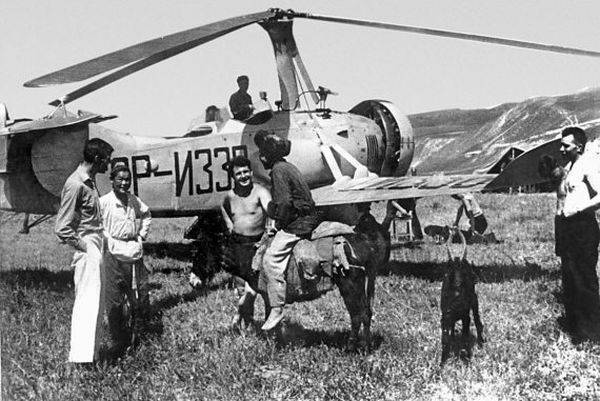
It was from these inconspicuous and rough apparatus that our helicopter building began. Obviously, without A-7 flights there would not be such famous combat vehicles as the Mi-24, Ka-28 and Ka-52.
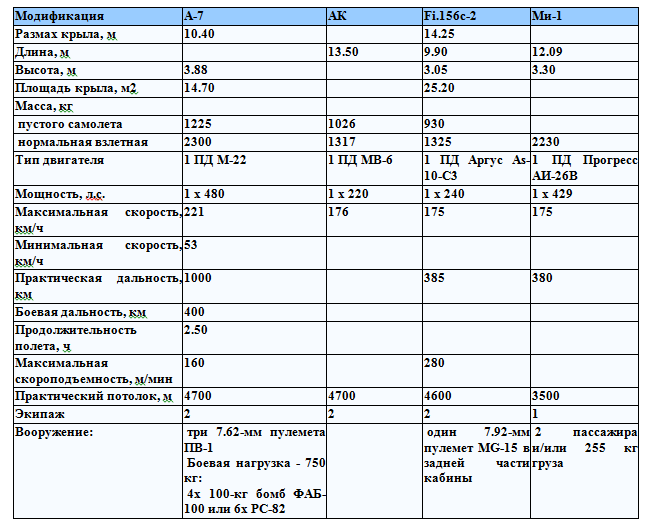
Sources:
Kondratyev V. Preface to military helicopters. Autogyro A-7 // Model Designer. 1987. No.3. C.20-24.
Edge I. Autogyros in the non-peaceful sky // Popular Mechanics. 2012. No.8. C. 86-89.
Kolov S. The world's first combat autogyro // World airplanes. 1996. No.4. C. 8-11.
Morozov V. Experience in the use of the autogyro А-7 // Wings of the Motherland. 2002. No.10. C. 12-13.
Satarov A. Avtozhirs A-7 and AK // Wings of the Motherland. 2002. No.10. C. 10-11.
Shavrov V.B. History designs of aircraft in the USSR 1938-1950 M .: Mashinostroenie, 1988. C. 451-452.
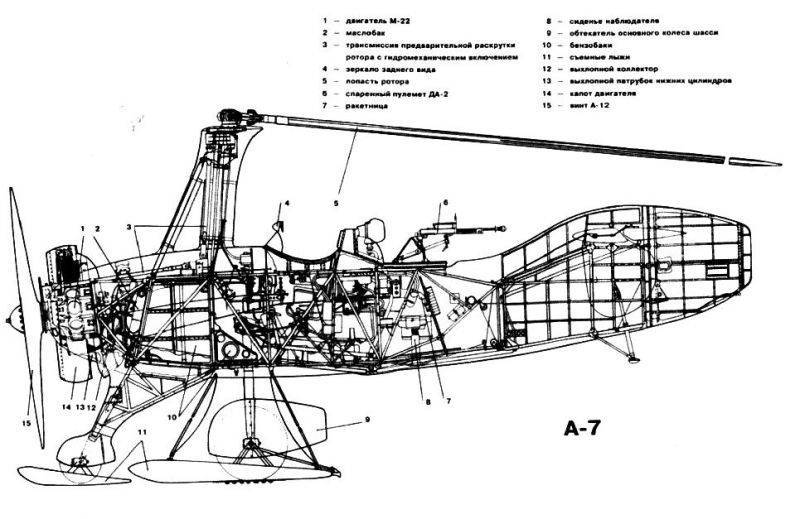
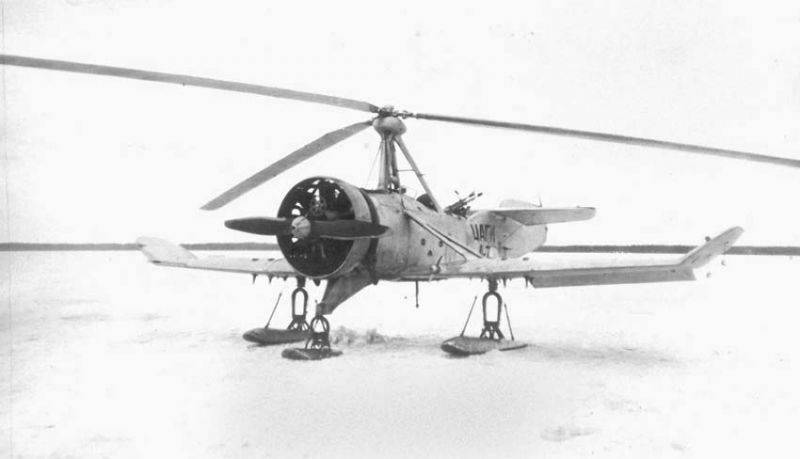
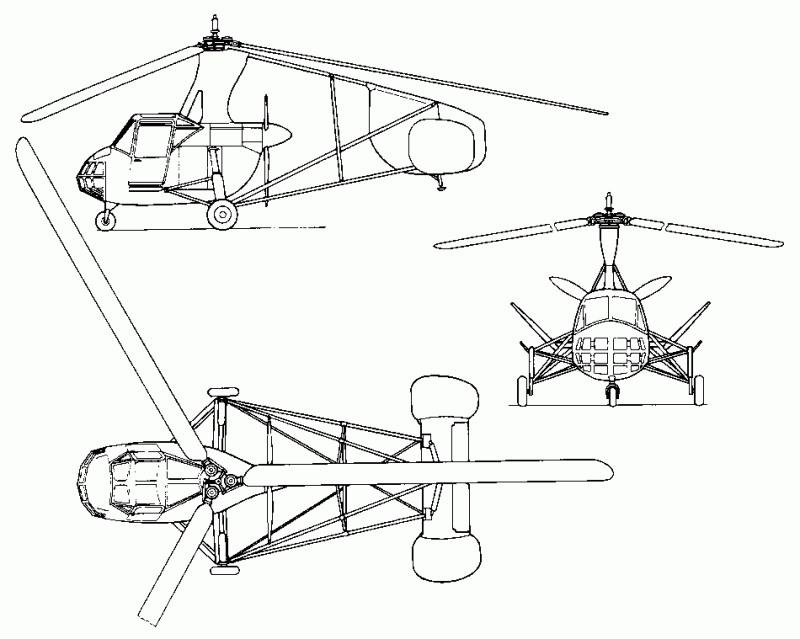
Information